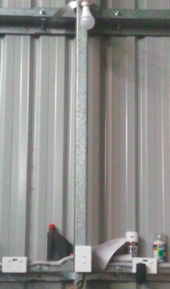Andrewr05
[Replicant 42069]
For clarification in this instance "low amperage" means under 10Amps.
Please answer the poll above


Please answer the poll above
Last edited:
Under 10Amps.What is low amperage??
I would keep it under 12 amps and use it.Under 10Amps.
The switches in my case will all be for lighting.

I clarified above.I voted no, because the question isnt specific enough.
"Low amperage" is such a wide range of possibilities.
And the voltage plays a huge part of the answer as well.
Would it work on a 12vDC system for switching some 12v LED house lights?
Most likely...
Unless the house is 2000sqft, and all LED lighting for entire house goes through the switch...
See...
It is difficult to answer.
When a switch rated for AC applications is used in DC circuits, the current rating of the switch is the same. The DC voltage limit is usually much lower, typically 1/3 of the AC rating - 120VAC RMS (170V peak) rated switch can be used in 170/3 or about 56V DC. The reason for the derating the voltage spec is that it is easier to sustain a spark/arc created by a DC current.
Unless otherwisw specified by the mnufacturer, a commonly used "rule of thumb" is that switch contacts, relay contacts, contactor contacts and small circuit breaker contacts, that are marked "AC only" can in fact be used on DC up to the rated AC current but only at about 10% of the rated voltage.
The DC current can not exeed the rated AC current.
Further restrictions apply for inductive/capacitive loads.
That was my problem, I don't necessarily have anything wrong with those style switches, but they just seemed odd to me and gimmicky.I have several 120V a/c snap switches switching 12V dc lighting circuits.
It's a non-issue.
They make some awesome DC lights that work amazing but I don't want to use cheeseball RV type switches.





